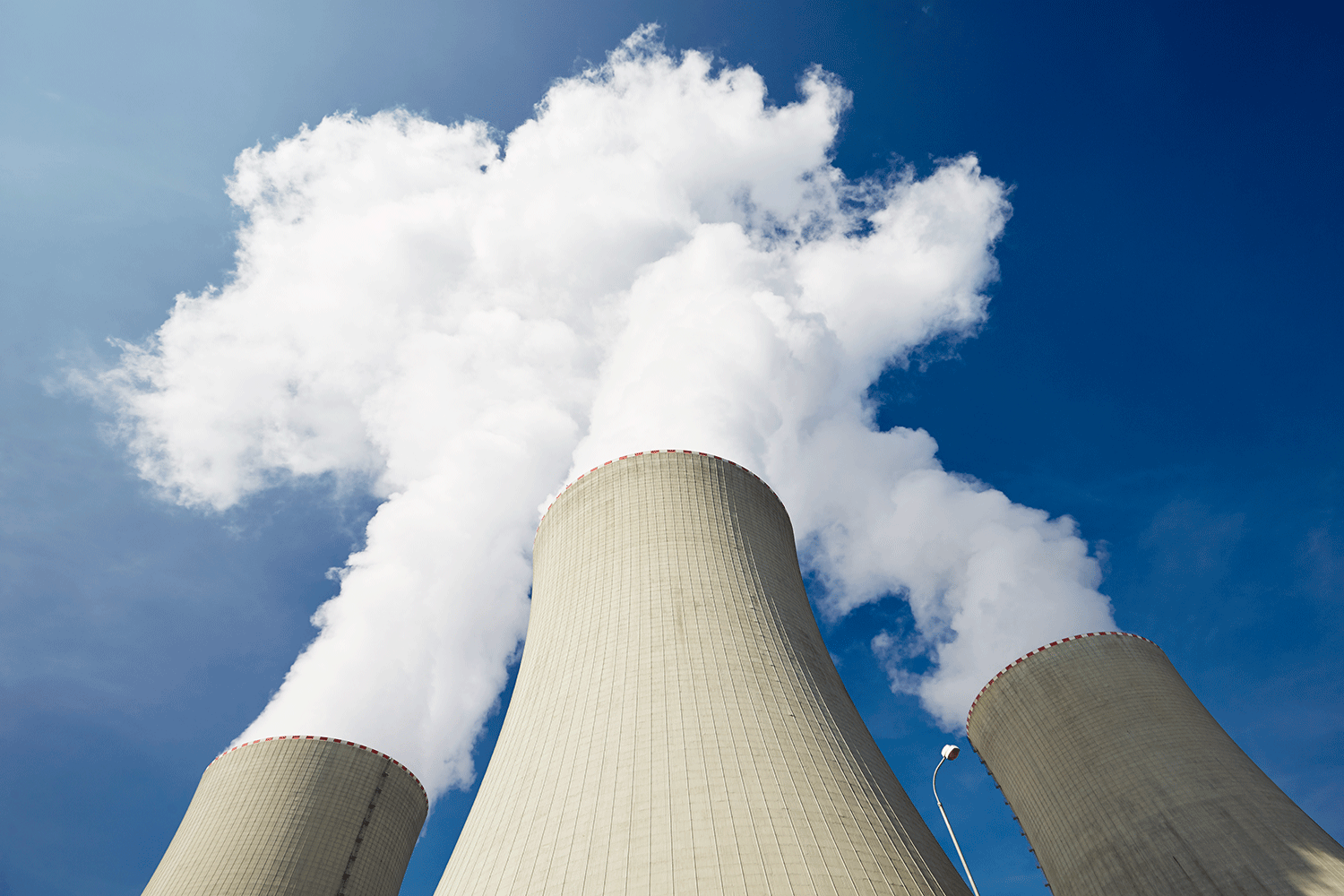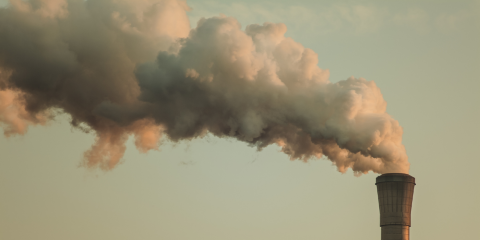Opposition’s nuclear costings are unrealistic

13 December 2024 (IEEFA AUSTRALIA): Australia’s federal opposition Coalition today released modelling from Frontier Economics for its plan to establish nuclear reactors at seven sites across Australia.
The following quotes are attributable to Johanna Bowyer, Lead Analyst, Australian Electricity at IEEFA.
Coalition Opposition’s forecast of nuclear costs is unrealistic
“The Coalition Opposition’s forecast of energy system costs with nuclear is unrealistic, as it contains underestimations and unclear costs.
“There are a number of areas in which the nuclear costs appear underestimated, including construction costs, fuel and operations & maintenance (O&M) costs, and construction timelines.
“How a number of costs have been factored in remains unclear – these include costs for small modular reactors (SMRs - which were proposed for South Australia and Western Australia), coal power plant extension costs, nuclear waste disposal costs, and potential nuclear accident liabilities.
“In addition, some misleading comparisons have been made, such as comparing the nuclear plan, which is based on lower electricity consumption, with the market operator’s plan which has higher electricity consumption.”
Underestimated: Nuclear construction costs are too low
“Recent experience with reactor construction overseas shows far higher costs than what is assumed in the modelling.
“The nuclear industry is famous for cost blowouts – low costs are promised, and the cost typically blows out significantly.
“We have found that nuclear reactor projects constructed in Europe and North America in the past 20 years have seen cost blowouts of 1.7 to 3.4 times original amounts, excluding financing costs.
“The modelling uses a $10 billion per gigawatt (GW) cost for large-scale nuclear reactor construction. However recent international experience shows actual construction costs of $15 billion to $28 billion per GW excluding financing costs. This is 1.5 to almost three times the Coalition Opposition figure.
“To really understand the full costs of nuclear, the financing costs incurred during construction need to be considered as well.”
“The modelling has forecast energy system costs of $331 billion in total, which would include the cost of building and running all technologies. However, IEEFA calculates that the cost to build the nuclear reactors alone – which are said to provide 38% of generation in 2051– could exceed $300 billion when financing cost during construction is included. This is based on the cost of the recently constructed Vogtle nuclear power plant, which was $23 billion per 1 GW of capacity (including financing cost during construction), scaled up for the 13GW proposed in the NEM.
“So, the nuclear reactor cost will likely be far higher than what has been put forward.”
Underestimated: Fuel and operations cost of nuclear is lower than expected
“The Frontier Economics report includes a fuel and O&M combined cost of $30 per megawatt-hour (MWh). However, CSIRO puts that figure at $40-$60/MWh in 2030, and $36-$56/MWh in 2050 from their recent GenCost 2024-25 consultation.
“So, there is a potential underestimation of nuclear fuel, operations and maintenance cost.”
Underestimated: Nuclear construction timeline
“It takes a long time to install nuclear – far longer than what appears to be assumed in the modelling. We saw recent construction schedules of 10-18 years from recent history in Europe and North America. Moreover, prior to construction, pre-construction work would need to be done and the nuclear regulatory regime would need to be set up – these steps would take years. Nuclear is unlikely to be in operation until the 2040s.
“However, the proposal assumes nuclear can start operating from 2036 onwards. This is not realistic.
“It appears short construction timelines have been used in the modelling. This could also result in underestimation of the financing cost during the construction of the nuclear power plants. As construction time increases, interest costs incurred during construction also rise. Construction delays can lead to significant cost rises for nuclear since it is such a high capital cost technology.”
Unclear costs: SMR considerations are not explored
“SMRs don't seem to be addressed in the report despite the Coalition Opposition stating they would install SMR plants in South Australia and Western Australia.
“The modelling report explains that the model does not build nuclear capacity in South Australia because there are no coal-fired power plants to be replaced in South Australia.
“The lack of detail on SMRs raises questions around which technology will actually be chosen.
“SMRs are costly and unproven. The NuScale SMR, which was cancelled in the US in the midst of cost blowouts, had a capital cost of around $29 billion per GW of capacity. The Frontier modelling uses $10 billion per GW capital cost for nuclear power which is much lower than the NuScale SMR.”
Unclear costs: Coal power plant extension costs do not seem to be mentioned
“The Frontier report assumes many coal power plants will be extended beyond their publicly announced closure dates, which have been nominated by the owners.
“If coal-fired power plants were to be extended, refurbishments may be required, but the costs for this don’t seem to have been considered.
“Subsidies to the coal power plant owners may also be requested – these also don’t appear to be explored in the modelling. The Eraring two-year extension could cost NSW taxpayers up to $225 million per year to cover potential power plant losses.
“However, despite potential significant coal refurbishment and subsidy costs, the Frontier report does not appear to explore the cost of the extension of coal-fired power plants.
“This could underestimate the actual costs to the system.
“Extending coal-fired power plants will also drive up emissions. The modelling shows that cumulative emissions over the period are far higher in the nuclear scenario.
“Further, there could be reliability questions as coal generators are ageing, and as we saw recently, are experiencing outages.”
Unclear costs: Nuclear waste disposal, nuclear accident liability
“There are uncertain costs that do not appear to have been explored in detail in the modelling, like the cost of nuclear waste disposal and liability for nuclear accidents. It is unclear if these have been factored into the operations and maintenance costs or not – and in any case the operations and maintenance costs appear low compared to other data. These costs add uncertainty and risk to the proposal.”
Misleading: Nuclear plan is costed for an economy with less electricity consumption
“The Coalition Opposition headline messaging around the nuclear costing is comparing apples to oranges.
“The Coalition Opposition headline figures compare the cost of the market operator’s plan to serve a larger electricity consumption, with the cost for the nuclear plan to serve a smaller electricity consumption. However, these are not like-for-like.”
Misleading: Spreading the cost over 50 years with unclear refurbishment costs
“The modelling has spread nuclear costs over a 50-year period.
“Since nuclear is not installed in the model until 2036 and onwards, and the nuclear capital cost is spread over 50 years (i.e. from 2036 to 2086 and beyond), IEEFA anticipates much of the nuclear cost will still not be repaid at the end of the Frontier report modelling period, 2051. This means that the Coalition’s proposal appears to have a long tail of cost outside of the modelled period that consumers will continue having to pay for.
“Further, it is not clear how refurbishment costs are considered, despite CSIRO’s latest GenCost report explaining that refurbishment of nuclear reactors is needed beyond the 40-year mark.”
Summary
“The Coalition Opposition is risking the public purse on an expensive technology that Australia has limited experience with.
“Nuclear is one of the most expensive forms of electricity generation and we found that introducing nuclear would result in rising bills.
“In our recent report, we looked at the actual, real-world experience of nuclear reactor projects installed overseas and found they were plagued by delays and cost overruns, and had costs far higher than what the Coalition Opposition is assuming.
“Based on overseas reactor projects, we found that nuclear power would cost 1.5 to 3.8 times the current cost of electricity in Eastern Australia.
“For nuclear power plants to be commercial and operating 24/7, the wholesale price would need to rise to these higher levels in order to enable nuclear cost recovery.
“This means household power bills would have to go up by $665 for a typical household and $972 for a four-person household per year.
“If nuclear costs were not recovered through the wholesale market and on power bills, then nuclear would require subsidies to remain commercial, and it appears these have not been included in the modelling.
“There are many remaining open questions around the nuclear proposal.”
Media contact: Amy Leiper, ph 0414 643 446, [email protected]
Author contact: Johanna Bowyer, [email protected]
About IEEFA: The Institute for Energy Economics and Financial Analysis (IEEFA) examines issues related to energy markets, trends, and policies. The Institute’s mission is to accelerate the transition to a diverse, sustainable and profitable energy economy. (ieefa.org)











